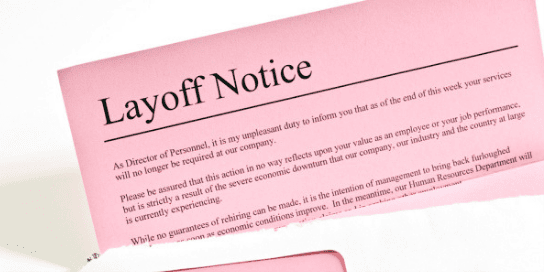Introduction:
Deferred compensation plans are complicated, overlooked, underused. Yet, these plans are one of the best opportunities to save A LOT on taxes. Like a nuclear power plant, they’re old, misunderstood, and some only remember the few events when they’ve melted down, but they have amazing tax saving power!
Because there’s little formal industry education, there’s a lot of client confusion. Also, many peers keep asking what the heck is “x” within this deferred compensation plan?
I love these plans but hate seeing disastrous client financial results without starting with eyes wide open.
Welcome to our series all about deferred compensation.
****PLEASE NOTE, this is an employer provided plan, this is not a plan an individual can open.
Four-Part Series:
Part One: Deferred Compensation Plans 101 – Cliff Notes
Part Two: Should I Defer My Compensation? How Do I Invest It?
Part Four: Deferred Compensation: Financial Planning Opportunities and Tradeoffs
After learned the basics, benefits, and risks, it’s now time to put it all together, and think through how to create a strategy within your overall financial planning. In financial planning just like life decisions come down to trade-offs. Without actually thinking through the trade-offs, and what could go right and wrong, we loose so much of what the benefit is.
- Trade-offs: Greater employer credit and acquisition risk versus greater future tax savings spreading out deferred income years
- The longer income deferrals are set to pay in the future, the more uncertainty and credit risk the client exposes themselves too. With more consolidation in the economy, the company could also become a future acquisition target. Paying out all benefits after 12-months from the buyout. Creating more taxes.
- We are in a trade-off, because spreading the deferred income throughout a longer time horizon (usually) provides the biggest tax benefit by keeping the total taxable income and marginal bracket low throughout the distribution period. Less Taxes!
- So, it’s critical that the participant is comfortable with how long the payment stream is, but it’s also virtually impossible to know how an employer will weather financial shock 20 years later.
- There’s a tradeoff: Tax reduction is key, but bankruptcy and acquisition have happened. The longer in the future you defer the greater the probability of both risks increase.
- So, it’s critical that the participant is comfortable with how long the payment stream is, but it’s also virtually impossible to know how an employer will weather financial shock 20 years later.
- We are in a trade-off, because spreading the deferred income throughout a longer time horizon (usually) provides the biggest tax benefit by keeping the total taxable income and marginal bracket low throughout the distribution period. Less Taxes!
- The longer income deferrals are set to pay in the future, the more uncertainty and credit risk the client exposes themselves too. With more consolidation in the economy, the company could also become a future acquisition target. Paying out all benefits after 12-months from the buyout. Creating more taxes.
- Trade-offs: Less sequence of return risk taking deferred compensation sooner in retirement and emotional comfort of a fixed payment versus more partial systematic Roth conversion opportunity
- A common strategy is to bridge income during the span of gap years in between the client’s chosen retirement age. Many advisors do this from age 59.5 (minimum IRA withdrawals) to either the Social Security maximum benefit (at age 70). Or, from 59.5 to the required minimum distribution age (at age 72-1/2).
- Both of these runways in years give us space before we are forced to create taxable income. Space for a sequence of years of systematic partial Roth conversions to take place. A huge benefit to clients with a large ratio to tax-deferred accounts (i.e., IRA, SEP, 401(k)), to after-tax accounts (e.g., Roth IRA).
- However, many clients have an emotional preference to receive a fixed distribution of income when they stop working.
- Plus, from a technical perspective, using deferred compensation can reduce sequence of return risk from other risky assets, and help a client in their initial years of retirement if the market is down big.
- For example, you have from 55 to 72 to execute systematic partial Roth conversions at the 12% tax bracket, and convert a small amount each year, but now due to the deferred compensation from age 55 to 70, you are in the 22% bracket. Creating more taxable income limiting the ability to execute Roth conversions in the lowest possible marginal tax bracket, but now without taking deferred compensation right when you retire, there’s less protection from a negative sequence of return risk. Where you would have to withdraw from accounts that have experienced large declines.
- In the above example, you could target a year, or the first or last few years, and split the difference lowering income in key years, but stil receiving deferred compensation.
- Trade-offs: Systematic partial Roth Conversions versus emotional considerations of income and more negative sequence of withdrawal risk
- In the above example, you could target a year, or the first or last few years, and split the difference lowering income in key years, but stil receiving deferred compensation.
- For example, you have from 55 to 72 to execute systematic partial Roth conversions at the 12% tax bracket, and convert a small amount each year, but now due to the deferred compensation from age 55 to 70, you are in the 22% bracket. Creating more taxable income limiting the ability to execute Roth conversions in the lowest possible marginal tax bracket, but now without taking deferred compensation right when you retire, there’s less protection from a negative sequence of return risk. Where you would have to withdraw from accounts that have experienced large declines.
- Plus, from a technical perspective, using deferred compensation can reduce sequence of return risk from other risky assets, and help a client in their initial years of retirement if the market is down big.
- A common strategy is to bridge income during the span of gap years in between the client’s chosen retirement age. Many advisors do this from age 59.5 (minimum IRA withdrawals) to either the Social Security maximum benefit (at age 70). Or, from 59.5 to the required minimum distribution age (at age 72-1/2).
- Trade-offs: Inflation versus Drawdown risk
- The main goal is tax savings, but the longer the dollars are deferred the more inflation becomes a larger risk. So, the rate of return earned on the deferrals needs to at least keep income up with inflation—or what the income is worth today, without exposing the client to significant drawdown risk.
- Remember, in many/most cases investments can’t be changed, and neither can the distribution years.
- Also, you can’t postpone withdrawals within 12 months to recover market losses, or rebalance during a drawdown in some cases once you have left your employer.
- Trade-offs: enough stocks to keep with rising costs, but not too much if the market falls significantly right before distributions are paid with no ability to change investments or when accounts pay distributions.
- Also, you can’t postpone withdrawals within 12 months to recover market losses, or rebalance during a drawdown in some cases once you have left your employer.
- Remember, in many/most cases investments can’t be changed, and neither can the distribution years.
- The main goal is tax savings, but the longer the dollars are deferred the more inflation becomes a larger risk. So, the rate of return earned on the deferrals needs to at least keep income up with inflation—or what the income is worth today, without exposing the client to significant drawdown risk.
- Trade-offs: Going back to work and increasing taxes versus extending the deferral another 5-years
- What about the scenario where now you don’t need the money or taxable income? It’s scheduled, but you don’t need it. What now? You have the option to defer your payment schedule out another 5-years, if you are under 12-months from receiving the deferred compensation. But plans will not allow a deferral if this is a lump sum. What should you do?
- For example, you get hired as consultant making $300k, right before you are starting to get $150k in income from the deferred comp plan this year. You were planning to retire. So, now you choose to defer the compensation out another 5-years, or to paying a lot more tax, or not accepting the role.
- Deferring the income out will cause a lot less in taxes in the same marginal tax bracket they did when they earned the income.
- Again with the same issues in the first point, the longer into the future the income is deferred, the greater the credit risk of the employer.
- What about the scenario where now you don’t need the money or taxable income? It’s scheduled, but you don’t need it. What now? You have the option to defer your payment schedule out another 5-years, if you are under 12-months from receiving the deferred compensation. But plans will not allow a deferral if this is a lump sum. What should you do?
Whoa, deferred compensation plans are less explored financial planning beasts. Thanks for making it through our four-part series, I hope you feel more confident about what deferred compensation plans are all about, and how you need to think through planning trade-offs. The tricky think about these is that every plan and every person is different, so there’s not a one size fits all to each of these trade-offs. Every participant needs to understand now only all the intricacies that go into their own plan, but their wider financial planning goals, so these plans can turbo-charge tax saving without blowing up a plan.






